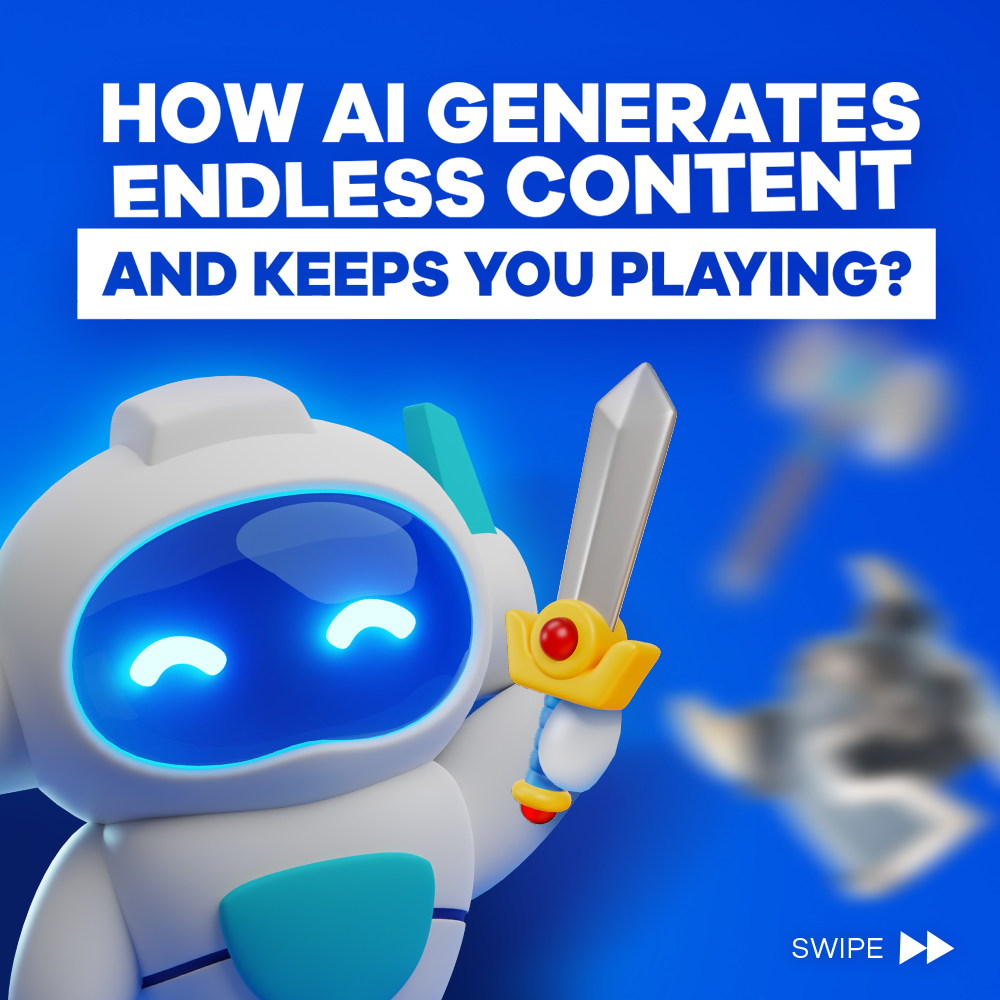
Kamel Haddad – Mar 11, 2024
Introduction
The impact of generative AI in different industries has been profound, and the gaming industry is no exception. By leveraging this technology, developers can employ vast and diverse game environments without the need for extensive manual labor.
Generative AI has redefined game design and created endless possibilities for creativity and enhanced player engagement. More particularly, it is revolutionizing the way content is generated, from levels and characters to game design and visual assets.
According to Market.us, the worldwide market for Generative AI in gaming reached a value of US$922 million in 2022, signalling the rapid adoption and growth of AI in the gaming sector.
Here’s how AI algorithms can transform game content creation:
1. Procedural Generation
AI enables procedural generation, creating dynamic and unique game environments, levels, and characters by setting the right parameters and guidelines. Developers can enhance gameplay experiences in terms of diversity and exploration within the game for players.
2. Dynamic Levels and Characters
Generative AI allows for the creation of dynamic levels and characters that are adapted to the player’s actions and choices. Not only does this personalize user experience and encourage player immersion, but it also increases player retention and satisfaction.
3. Narrative Generation
AI can generate narratives and storylines based on players decisions’ in real time. This provides developers with the help to create dynamic worlds and stories, designed to win players’ hearts and minds.
Tools for Generating Game Content
In game development, the utilization of advanced AI-driven tools for both artistic and technical purposes has become increasingly prevalent. These tools have changed the processes of content creation, image generation, code understanding, and much more. Let’s explore some of the prominent tools used for this:
Artistic Purposes
Chat GPT
Chat GPT is utilized for image creation, allowing developers to leverage its natural language processing capabilities to generate captions for screens and Custom Product Pages (CPPs). Additionally, it serves as a valuable resource for translating captions, especially when localizing pages for diverse audiences.
Midjourney
Midjourney plays a crucial role in the creation of icons and the generation of ideas for game content. Its “prompt function” allows developers to create images from scratch, while the “blend function” facilitates the creation of new images by blending references.
Technical Purposes
OpenAI GPT
OpenAI GPT is instrumental in text localization, code understanding, and code generation through Copilot. It can empower developers to streamline the localization of game content and enhance their understanding and generation of code, thereby expediting the technical aspects of game development.
OpenAI LLM Models
OpenAI LLM models are employed for diverse applications in game development, including the creation of a software development kit (SDK) chat bot through Slack and the ongoing development of game pitches (WIP). These models offer valuable support in enhancing communication, collaboration, and the conceptualization of game ideas.
OpenAI LLM Dall-E 3
OpenAI LLM Dall-E 3 is utilized to generate image assets for app store optimization (ASO) and game art. Its image generation capabilities contribute to the creation of visually attractive and contextually relevant assets to help with the marketability of games.
By leveraging these AI-driven tools for both artistic and technical purposes, game developers can enhance their creative output, streamline the development-to-delivery processes, and drive innovation in the gaming industry. However, we are well-aware of the numerous advantages of this technology, and it’s equally important to recognize certain challenges and concerns it brings forth.
Advantages of Generative AI for Games
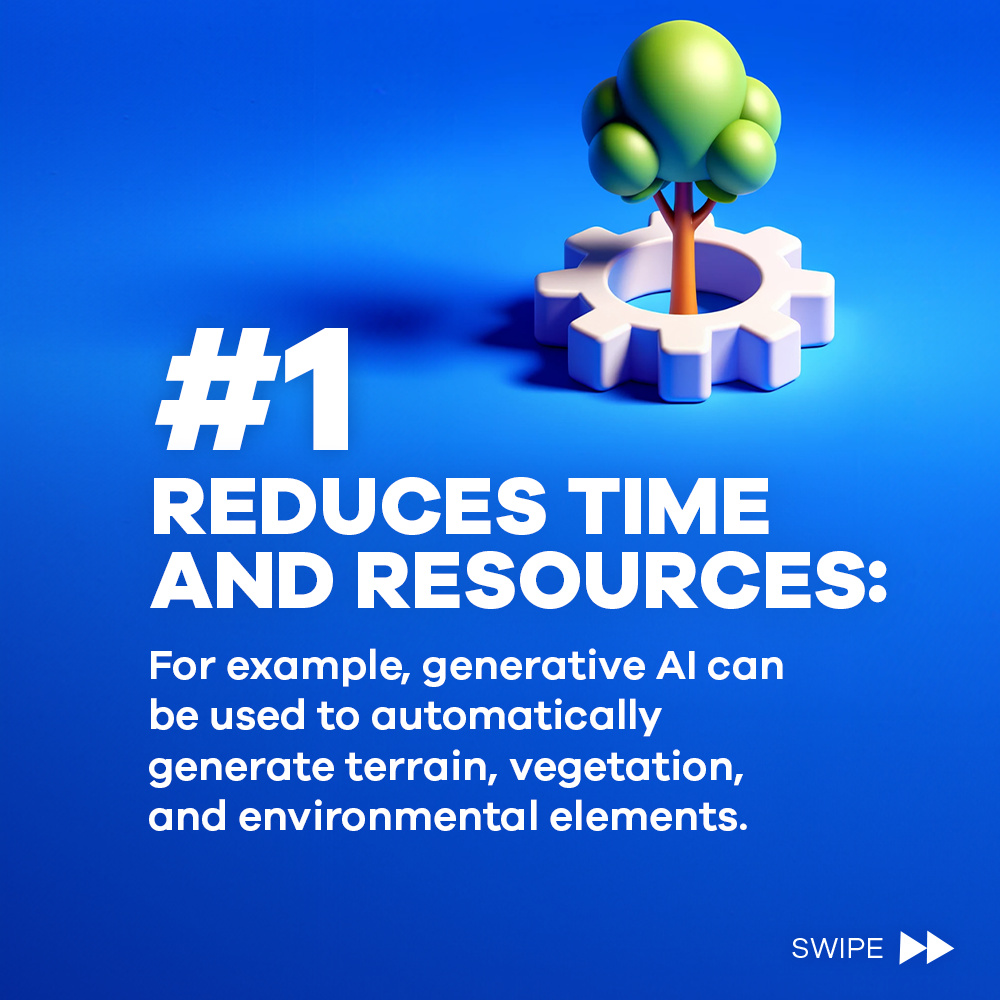
- Reduces Time and Resources: Generative AI streamlines content creation, saving time and resources for developers, thus accelerating the game development process. For example, generative AI can be used to automatically generate terrain, vegetation, and environmental elements.
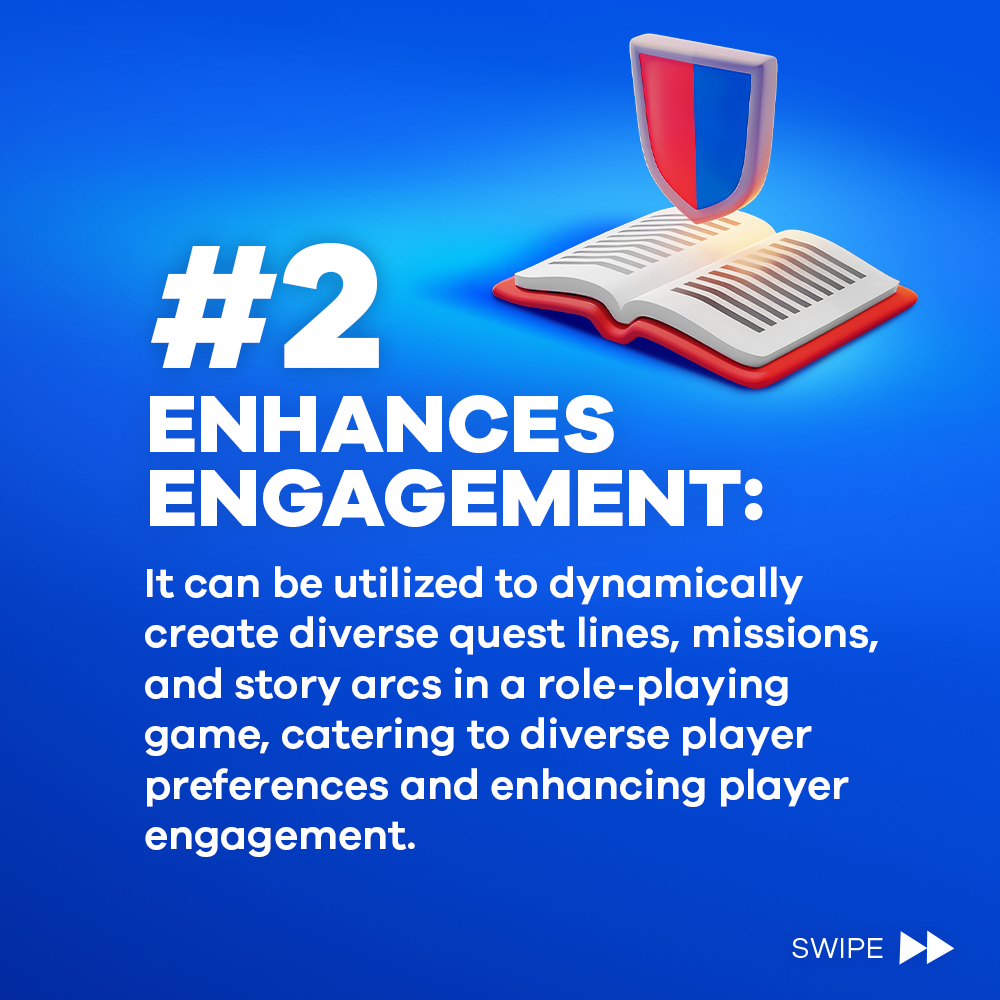
- Enhances Engagement: AI-generated content contributes to crafting engaging game themes, ideas, and experiences. It can be utilized to dynamically create diverse quest lines, missions, and story arcs in a role-playing game, catering to diverse player preferences and enhancing player engagement.
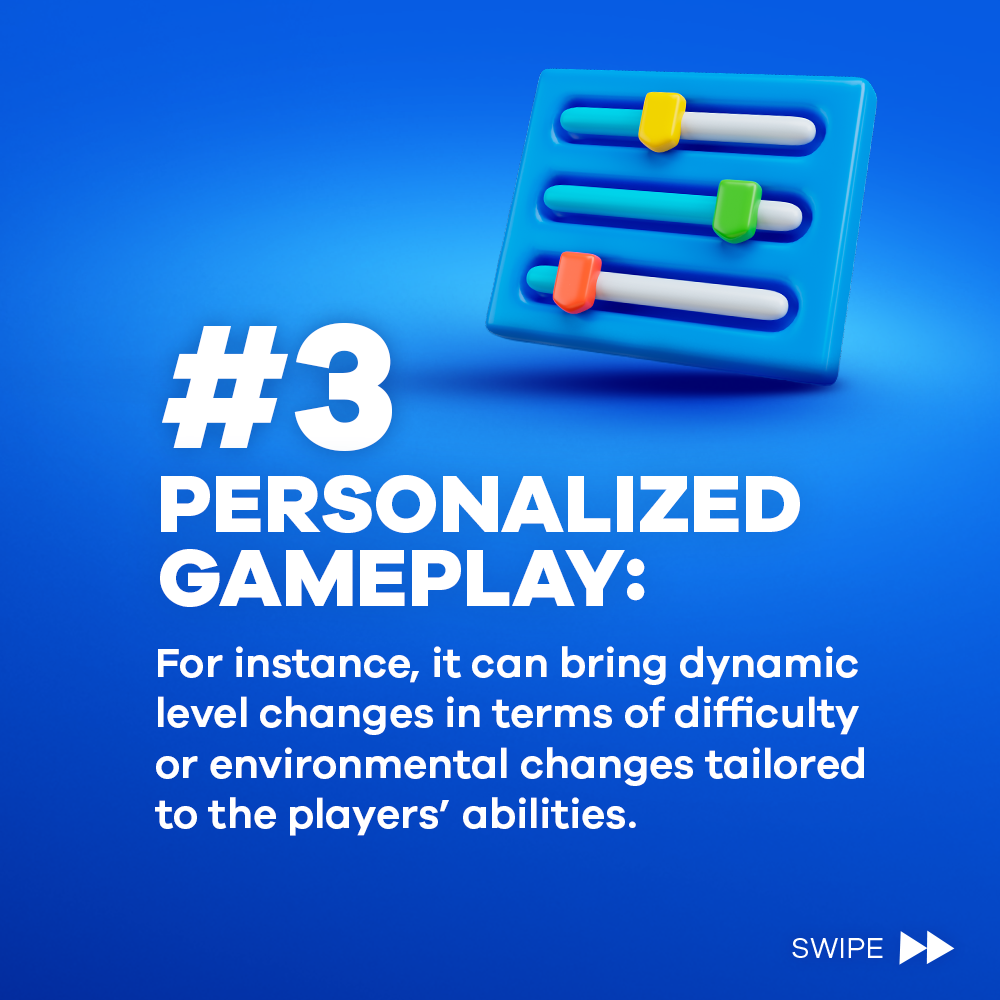
- Personalized Gameplay: It enables more personalized and dynamic gameplay, leading to higher player satisfaction and prolonged engagement. For instance, it can bring dynamic level changes in terms of difficulty or environmental changes tailored to the players’ abilities.
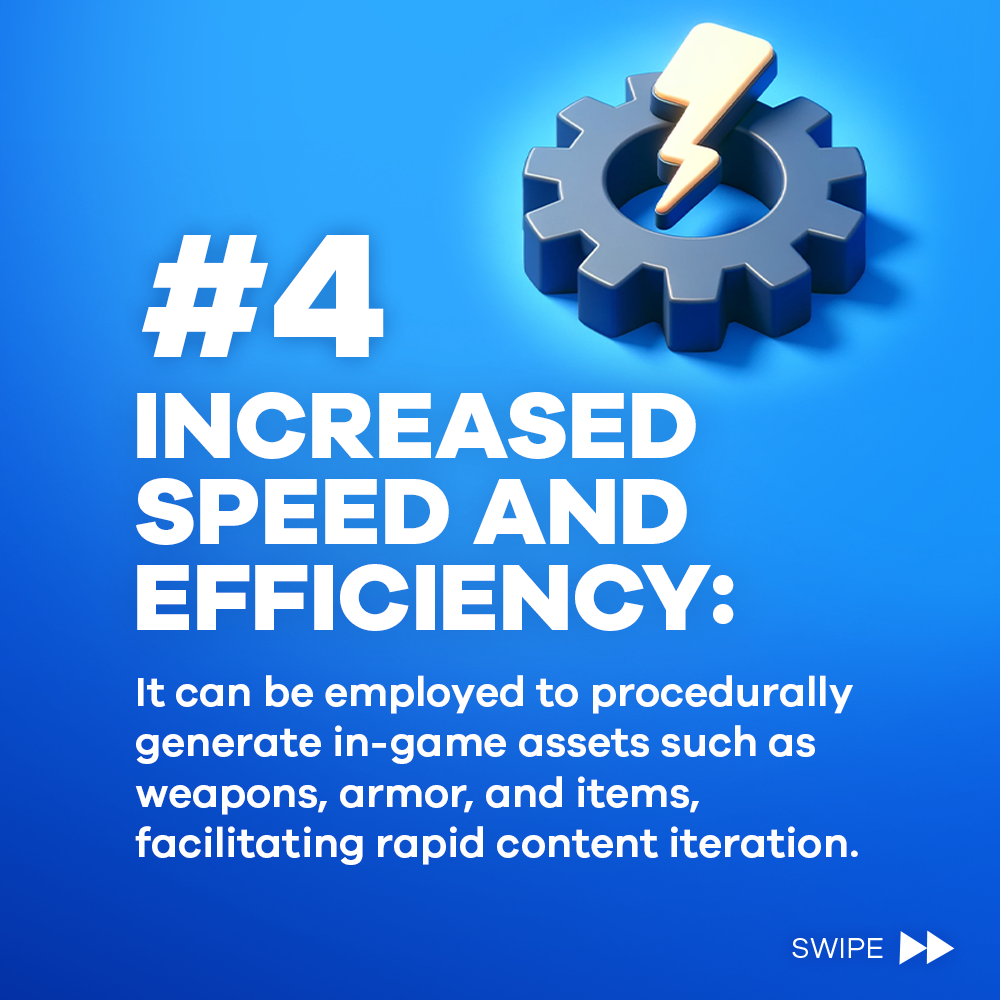
- Increased Speed and Efficiency: This technology content accelerates game development, enabling faster releases and updates, thereby keeping players involved with fresh content. Additionally, it can be employed to procedurally generate in-game assets such as weapons, armour, and items, facilitating rapid content iteration.
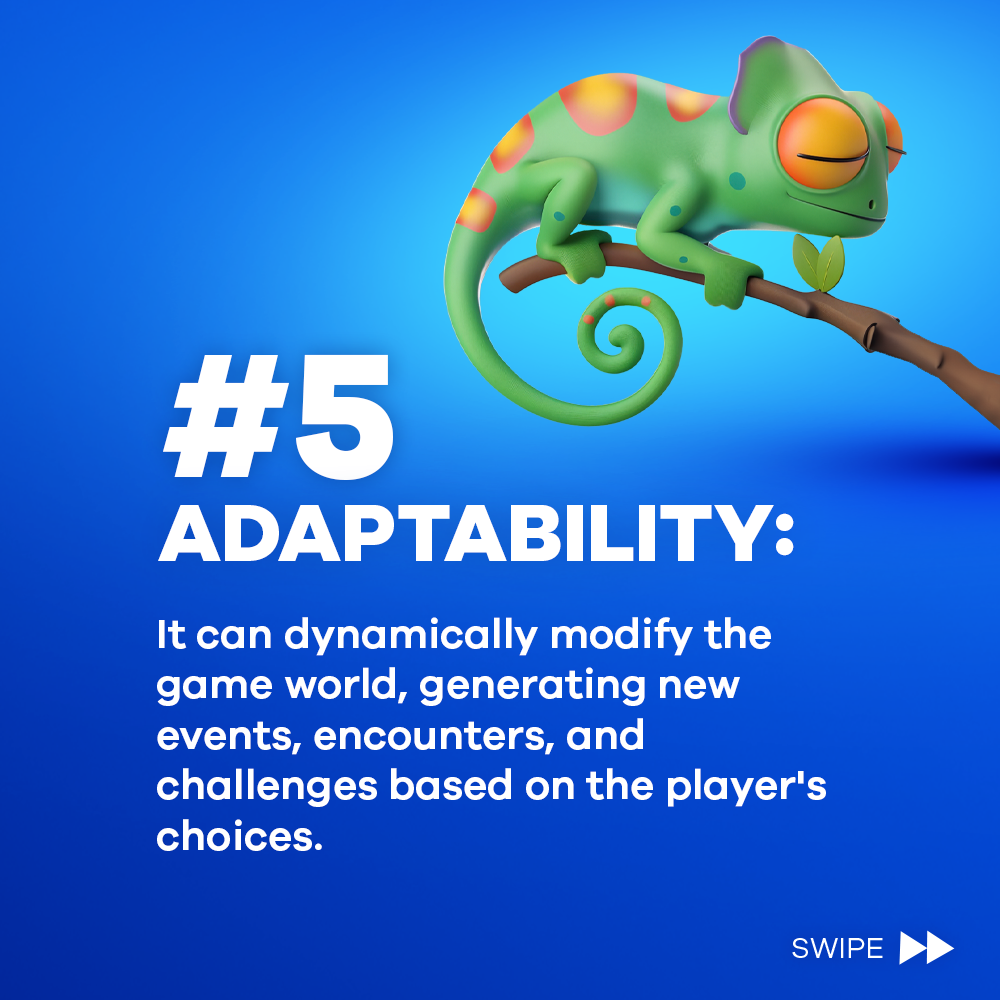
- Adaptability: Generative AI helps adapt to player behavior, decisions, and preferences, creating more engaged and responsive gaming experiences. It can dynamically modify the game world, generating new events, encounters, and challenges based on the player’s choices
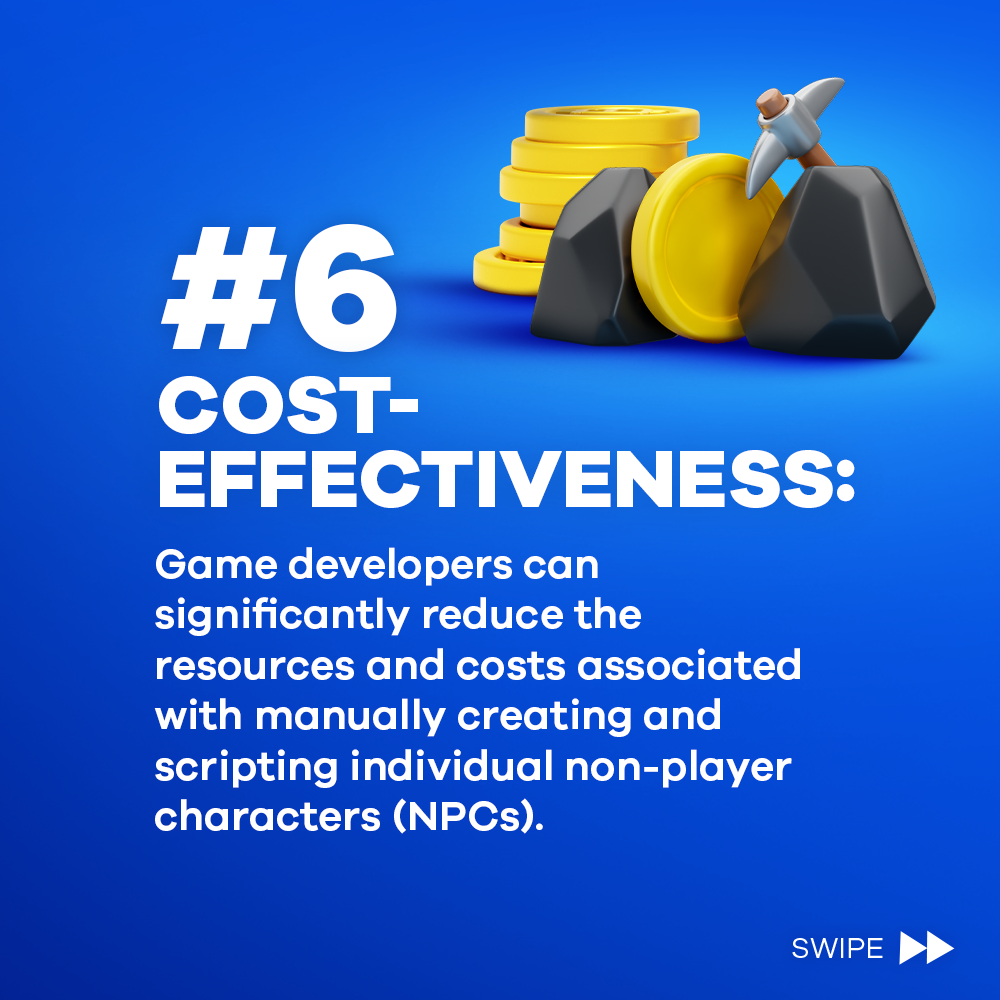
- Cost-Effectiveness: The use of AI-generated content can potentially reduce the cost of content creation and game development, making it a cost-effective solution for developers. Game developers can significantly reduce the resources and costs associated with manually creating and scripting individual non-player characters (NPCs).
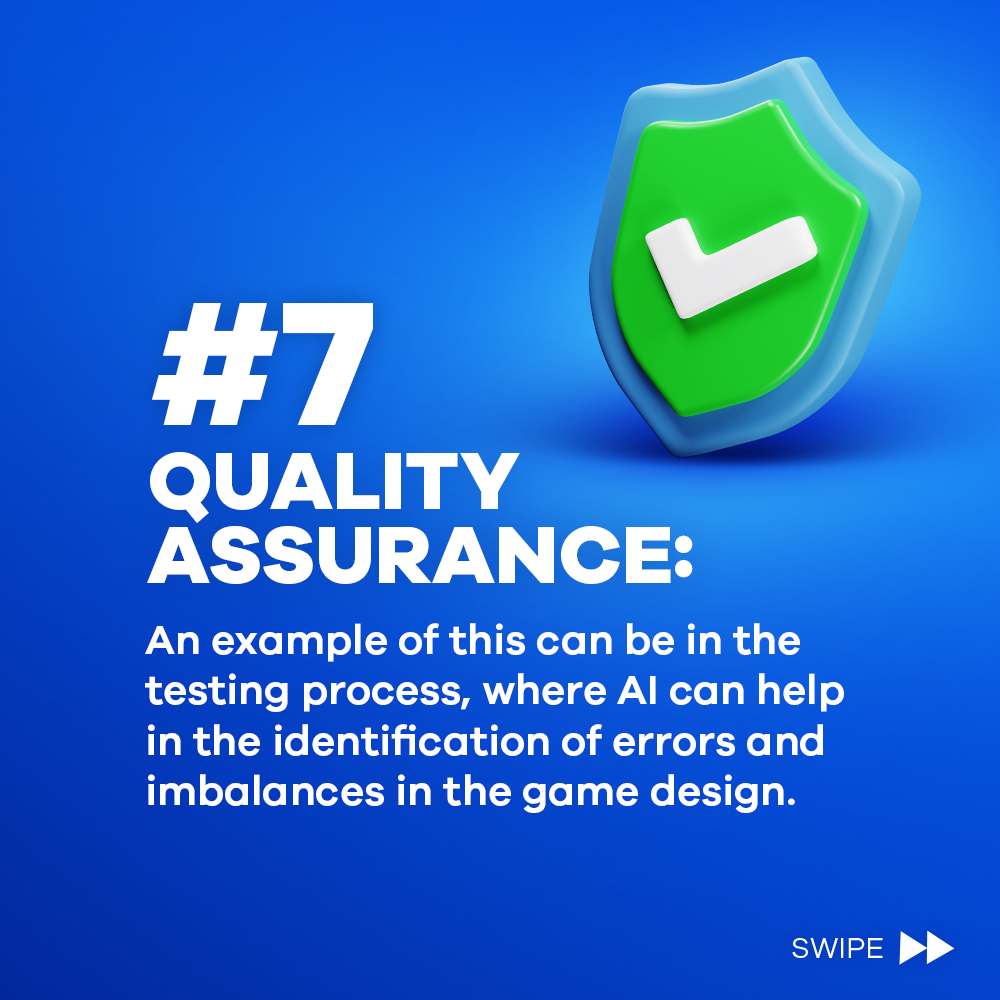
- Quality Assurance: AI assists in ensuring the quality and consistency of generated content, thereby increasing the overall quality of games. An example of this can be in the testing process, where AI can help in the identification of errors and imbalances in the game design.
Disadvantages of Generative AI for Games
- Control Over Content Quality: Maintaining control over the quality of AI-generated content can be challenging as it can lead to inconsistencies in content quality.
- Creativity: There are concerns about the ability of AI to match the creativity of human-generated content. It may raise questions about the originality and uniqueness of game experiences.
- Originality: The originality of AI-generated content may also raise concerns, impacting the uniqueness of gaming and the creative input of human developers.
- Data Privacy Concerns: The use of generative AI in gaming can be alarming with regard to data privacy. In particular, the collection and analysis of player-related data can be a sensitive issue.
Conclusion
Generative AI has significantly transformed the gaming industry and it offers unprecedented opportunities for content creation and game design. While AI-generated content provides various advantages such as efficiency, personalization, and cost-effectiveness, it also presents some challenges related to quality control, creativity, originality, and data privacy.
As the technology continues to evolve, finding the right balance between leveraging AI for content generation and preserving human creativity and control will be crucial for the future of game development.


